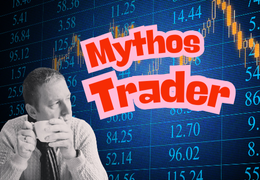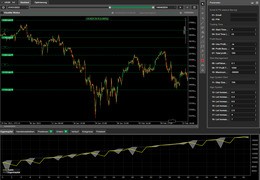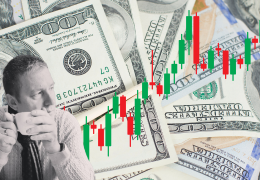Between reality and illusion If you want to know what trading really means—beyond luxury cars, piles of cash, and...
Search in blog
Blog categories
- FAQ – Your guide through the world of finance and technical facilities (2) click
- Daytrading Almanac (27) click
- Press release (23)
- Educational (26) click
- Projects (9)
- Chart analysis (39) click
- Trading bots for cTrader (11)
- AI in trading (5)
- Trading Strategien (11)
- Trading signals and stock market letters (46)
Latest posts

When it comes to traders, social media platforms often create a rather one-sided image: a young face smiling at the...

The TegasFX Instant Funding program sets a new standard for traders seeking quick access to capital without having to...

Backtesting trading strategies is an essential tool for traders who want to validate their methods across historical...

introduction In the world of trading, it can be challenging to balance the intense market activity and the rapid...
Popular posts





Featured posts





Photo gallery
No featured images
Archived posts
Top authors
-
 Christian Lill 70 Posts View posts
Christian Lill 70 Posts View posts -

-

-

-

Trading variants
Trading variants
Day trading
This course focuses exclusively on day trading. Day trading refers to buying and selling financial instruments within the same trading day. This means all positions are closed before the market closes to avoid risk held overnight. This approach requires quick decisions and careful monitoring of market movements. The course will cover specific strategies, risk management techniques and analysis methods that are essential for successful intraday trading.
Swing trading
Swing trading is a trading strategy that aims to profit from price changes (“swings”) that can last for several days to weeks. Unlike day trading, where positions are closed within a day, swing traders hold their positions for longer periods of time to profit from more significant market movements. This strategy requires a thorough analysis of market conditions and trends, as well as effective risk management. Swing trading is suitable for traders who do not have the opportunity to continuously monitor the market and who are less short-term oriented.
Scalping
Scalping is a popular trading strategy that aims to make small and regular profits from minimal price movements in the financial markets. Scalpers who use this strategy often make dozens or even hundreds of trades per day, keeping positions open for very short periods of time, sometimes just seconds or minutes.
Characteristics of scalping:
- High Frequency: Scalping involves a very high frequency of trades within a trading day. Scalpers seek to profit from very small price changes and therefore require a high number of trades to make significant profits.
- Small profit targets: The profit targets on each trade are typically very small, often only a few pips in forex trading.
- Fast decision making: Due to the short holding times of positions, scalpers must be able to make quick decisions. They react very quickly to market movements and often use automated trading systems or trading platforms with very fast execution times.
- Low risk per trade: Scalpers only use a small percentage of their capital on a single trade to minimize risk. This is important because even small price movements against the position can cause large losses if not traded carefully.
- Highly liquid markets: Scalping is typically carried out in highly liquid markets as these provide the necessary price stability and low spreads required for this strategy to be successful.
Benefits and challenges:
- Advantages: Scalping can be profitable, especially in highly volatile markets where price changes occur frequently. The quick closure of positions also minimizes the risk of large losses due to sudden market movements.
- Challenges: This strategy requires constant market monitoring and quick decision making, which can be psychologically stressful. Likewise, the cost per trade is higher because trading occurs more frequently, increasing transaction costs.
Scalping is not suitable for every trader and requires specific skills and a suitable trading environment. Successful implementation of this strategy requires a well-thought-out methodology and a disciplined approach.
Volume trading
Volume trading refers to a trading strategy that uses trading volume as the main indicator for making decisions. Volume indicates the number of shares, contracts or lots traded in a given period of time and is a measure of the intensity with which a particular financial instrument is traded. This information is used to confirm the strength of a price trend or predict possible reversals.
Basics of volume trading
- Volume as confirmation: Increasing volume along with a sustained price trend (whether up or down) is seen as confirmation of that trend. It indicates that a large number of market participants are actively supporting the trend.
- Volume and trend reversal: A sudden increase in volume can also indicate an impending trend reversal, especially if this increase occurs at price extremes (e.g. peak highs or lows).
- Low volume price movements: Are often less reliable and can indicate a lack of interest or uncertainty in the market. Such situations often provide less support for sustainable price moves.
Volume trading strategies
- Volume Price Analysis (VPA): This form of analysis combines volume data with price movements to understand market behavior. VPA looks for discrepancies between volume and price changes to identify possible entry and exit points.
- On-Balance Volume (OBV): OBV is a cumulative indicator tool that relates volume to price movements. It adds the day's volume if the market closes higher and subtracts volume if the market closes lower. Rising OBV values indicate increasing demand and therefore upward price trends.
- Accumulation/Distribution Line (A/D): This line helps measure the amount of buying and selling pressure behind price movements by looking at the closing price relative to the day's high and low and offsetting it against volume.
Advantages of volume trading
- Enhanced signals: Volume can enhance the significance of price trends by providing additional evidence for the movements.
- Early detection of trend reversals: High volumes at certain price levels can indicate turning points in the market early on.
challenges
- Data access and interpretation: Access to accurate and timely volume data can vary across markets. Correctly interpreting volume also requires experience and a deep understanding of the market.
Volume trading provides a robust method of understanding market dynamics and can be a valuable complement to other trading strategies by providing insight into the underlying forces of the market.
Leave a comment
Related posts
 Can you make a living from trading?
Can you make a living from trading?
 Basics
Basics
 Fundamental analysis
Fundamental analysis
 Technical Analysis
Technical Analysis
